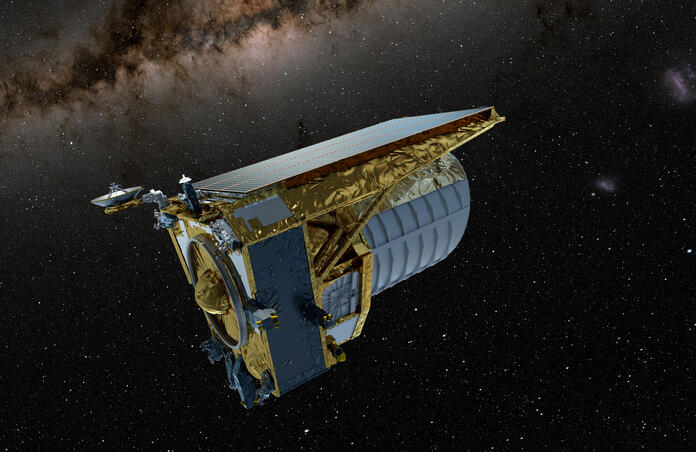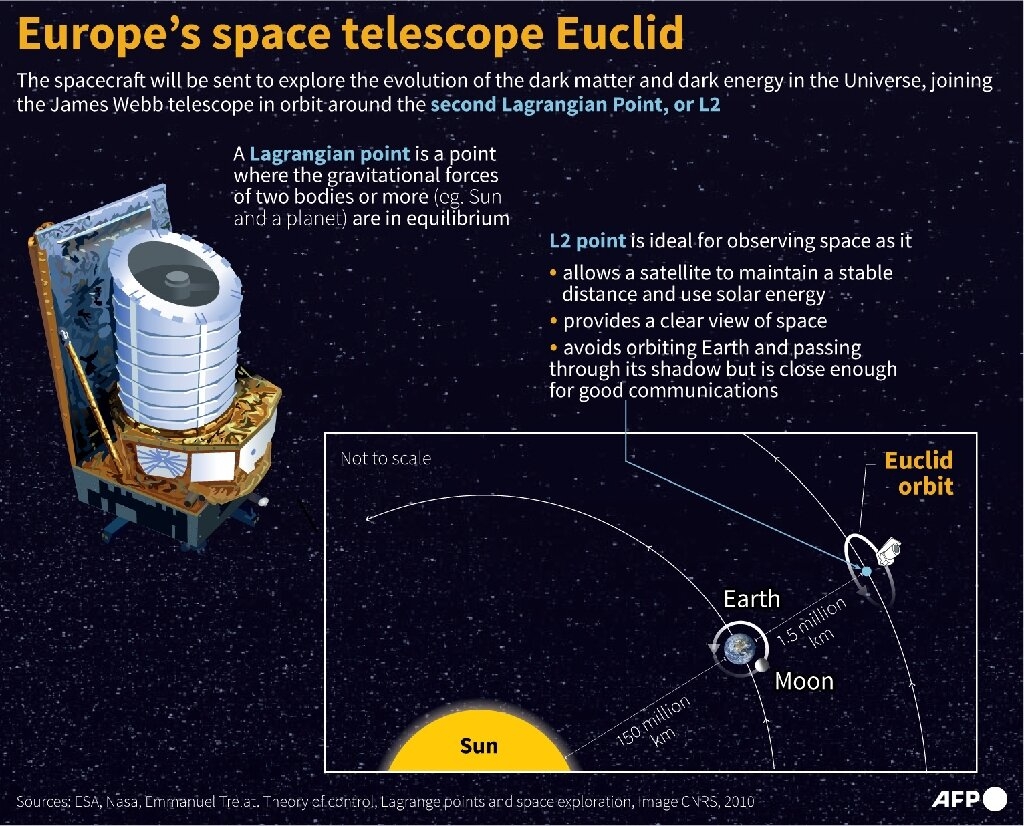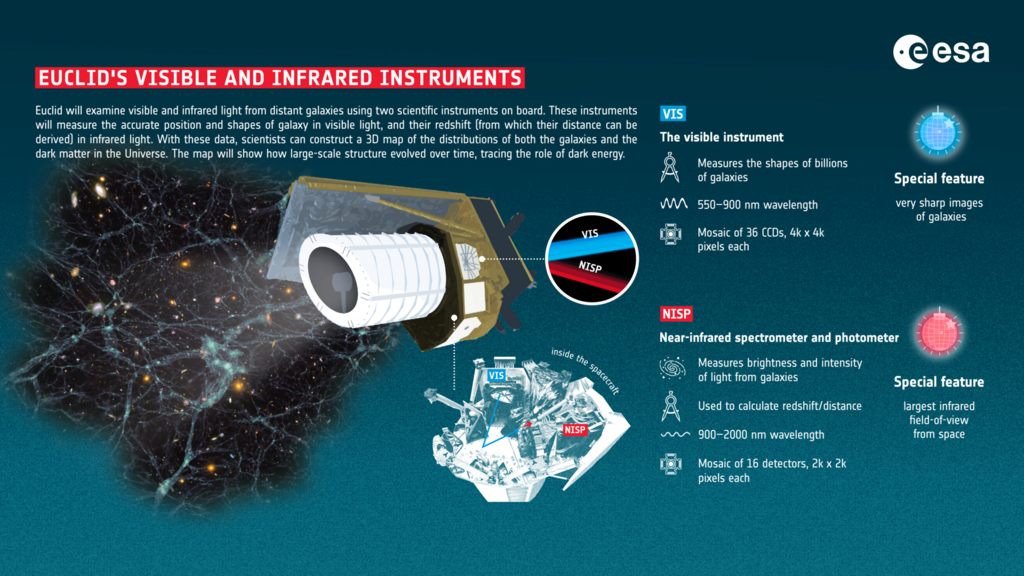ESA's Euclid mission: exploring the dark universe

ESA’s Euclid mission is set to launch in just a few days on the 1st of July and will hope to uncover the dark side of the cosmos. The dark matter probe will observe billions of galaxies, looking 10 billion light years into the past across more than 1/3 of the sky to create a 3-D map of the universe. Through this, the extent and influence of the dark constituents will be measured to a sharper degree than ever before.
Dark energy and matter have remained a mystery to scientists for decades, their existence only being inferred through the effects they have on visible matter. Dark energy accelerates the expansion of the universe, whereas dark matter controls the growth of cosmic structures. This has raised a number of questions regarding such components, which make up a substantial proportion of the universe, such as how did the early universe grow? How did galaxies come together? Why is the expansion of the universe accelerating?

This is where Euclid comes in. Through observing the evolution of the universe over 10 billion years, the mission will reveal how it has expanded and changed over time, and consequently, how structures have formed. These observations will be used to indirectly measure the properties of dark energy, matter, and gravity to provide insight into their nature. The dark matter probe will use the effect of weak gravitational lensing, a phenomenon where a background object is distorted due to the presence of a foreground object, caused by the bent path light takes through warped space-time to reach the observer. Euclid will observe this effect more sharply than any observatory before since it will be stationed at Lagrange Point 2.

The spacecraft stands at 4.7m tall, spanning 3.7m in diameter, and is comprised of two components: the service module and the payload module. The payload module contains a 1.2m diameter telescope equipped with two instruments; a visible wavelength camera and a near-infrared camera/spectrometer, which will work together to observe large regions of the sky at a time. The service module contains satellite systems.
"The field of view of the telescope is half a square degree of sky at a time; that's really big if you compare it to the Hubble Space Telescope, and huge if you compare it to the James Webb Space Telescope," Will Percival, primary science coordinator for the Euclid space mission at Canada's University of Waterloo, told Space.com in an individual interview.
"We will look at a patch and tape an observation. Because we're doing these really precise and weak 'lensing' observations, we don't want to drift scan. We (therefore) want to move the telescope to another patch and take that patch," Percival continued. "Then we stitch together this survey through different exposure numbers, different data patterns, all butting up to each other like bricks in a wall until we've observed the whole sky."
The mission is scheduled to launch on a SpaceX Falcon 9 rocket from Florida Cape Canaveral Space Force station at 15:11 GMT on 1st July. Following the launch, it will undergo a commissioning period of 8 months, including a one-month transit to L2.
Euclid is scheduled to operate for 6 years, where it will eventually work with NASA’s Nancy Grace Roman space telescope in efforts to study the dark universe. Roman will be launched by May 2027, using a different technique to study cosmic acceleration. The complementary mission will probe the universe to a much greater depth and precision than Euclid but over a smaller area of roughly 1/20 of the sky. The region of the sky will be observed in the infrared, looking back to when the universe was 2 billion years old, thus uncovering a higher number of fainter galaxies that remain invisible to Euclid. "Together, Euclid and Roman will add up to much more than the sum of their parts," said Yun Wang, a senior research scientist at Caltech/IPAC in Pasadena, California, who has led galaxy clustering science groups for both Euclid and Roman. "Combining their observations will give astronomers a better sense of what's actually going on in the universe."
--
Cover image: By ESA, CC BY-SA IGO 3.0, CC BY-SA 3.0 igo, https://commons.wikimedia.org/w/index.php?curid=128347141
Reference: Balzer, A. (2023). NASA’s Roman and ESA’s Euclid Will Team Up To Investigate Dark Energy. [online] NASA. Available at: https://www.nasa.gov/feature/goddard/2023/nasas-roman-and-esas-euclid-will-team-up-to-investigate-dark-energy
